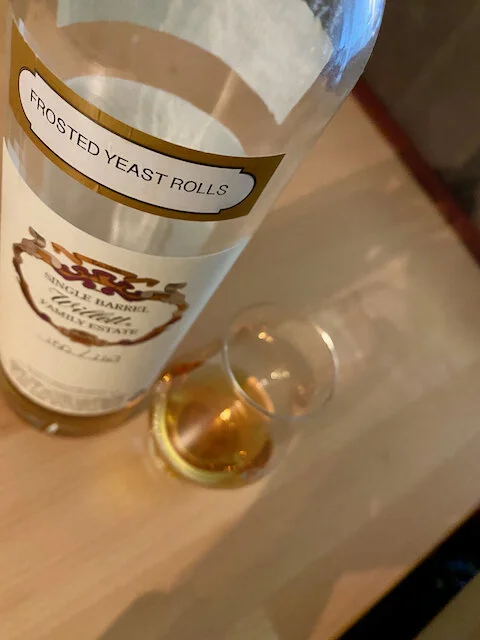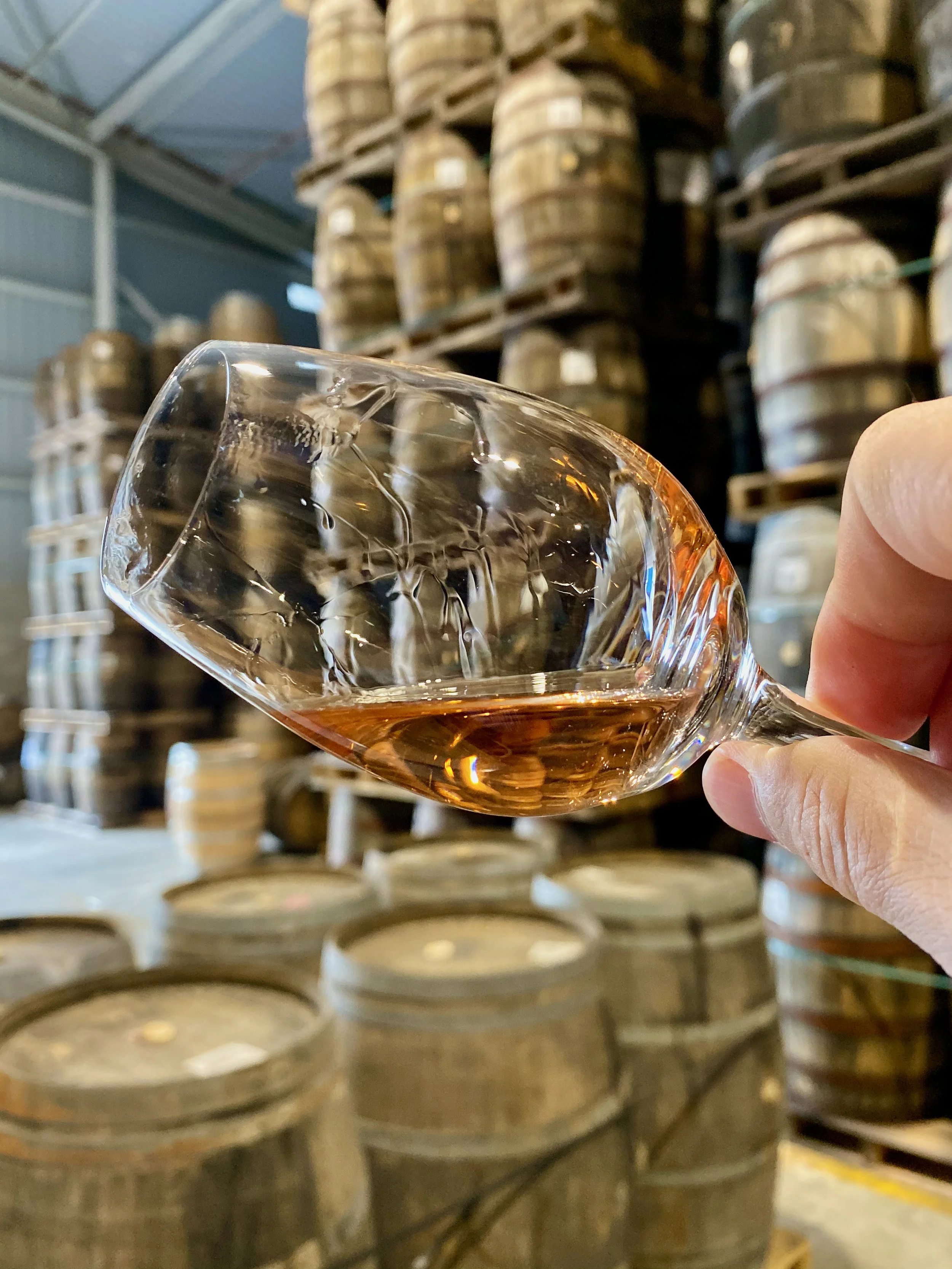Recently, a couple of us at Spotlight had the pleasure of participating in a one-on-one tasting with Marc Laverdiere, the Canadian Brand Ambassador for Highland Park, The Macallan and The Famous Grouse.
One piece of wisdom he shared with us early on is that, when tasting and choosing a Scotch, it’s not about finding the perfect Scotch, but rather finding the perfect Scotch for the moment. In an effort to bring us closer to the harmony between selection and moment, we had the pleasure of tasting several different types of Scotches. Below are some of the points that I found particularly interesting during this introspective.
Barrels, Oak, and Flavouring
Barley-based alcohol (which is what Scotch is made of) is, on its own, quite unpleasant to smell and taste. The Scotch that we’re used to drinking benefits from the added flavours that come from the barrels used in the aging process. This is one of the reasons why older Scotches take on more distinctive flavours: they absorb these flavours from the barrels. Saying that, virgin barrels would only provide an oaky touch to the Scotch, and thebarley-based whisky requires more flavour to give drinkers the richness they’re looking for.
Macallan, for example, purchases their casks from sherry producers, who use the barrels first to ferment their sherry, and then sell the barrels to other distilleries to be used in the Scotch aging process. Ex-sherry barrels are more likely to produce a rich dried-fruit type flavours scotch, while bourbon barrels tend to produce a softer more floral scotch. During Prohibition, many bourbon distilleries started selling their barrels to Scottish distilleries, and so the American Oak bourbon barrels became popular. As it stands, bourbon barrels are more likely to be used these days because sherry production is fairly low whereas bourbon is produced in great quantities in the US. While many distilleries in Scotland traditionally used sherry casks, the relatively low supply and high demand has made these casks quite expensive.
Like in wine, barrels are often reused when making Scotch. First-fill barrels produce the most flavour, and with each re-use, the flavouring decreases. Distilleries often mix the liquid from first-fill with second-fill barrels to produce balanced flavours. An older Scotch is not only aged longer in the barrels, but it is likely to be made with more first-fill barrels as compared to a younger Scotch.
The type of wood also enters into the equation. There are generally two types of oak used in the production of these barrels: American (which is tightly grained) and Spanish oak (which is more durable and robust). The latter is typically preferred, but these barrels are difficult to export and are pricy. Other distilleries will use other types of oak, but Macallan and Highland Park stick to only these two. American oak is used in two varieties, the first being as ex-bourbon casks and the second in the production of sherry. When Macallan uses American oak ex-sherry casks it actually grows the trees in the US, ships them to Spain, makes the barrels, and naturally air-dries them so that the wood takes on the elements of the air. These barrels are then filled with sherry that’s aged 2 or 3 years. By the time those barrels are filled with Macallan scotch, they would have already gone through a 6 or 7 years maturity process. Only then does the scotch get aged.
When tasting Scotches, it is an enlightening experience to find out the details of the barrels used during the aging process.
The Macallan
The Macallan comes in two varieties. The traditional line only uses ex-sherry cask, and provides for the rich flavours that Macallan is known for. Showcasing this line, we were privileged with a pour of Macallan 18, a perfect dessert Scotch. Tasting notes include Christmas fruitcake with rich dried fruits, spice, and a long butterscotch finish. The texture is quite creamy and silky, and this is all due to the use of ex-sherry Spanish oak barrels. The 12 and 18 year old Macallan are made in the same style, although the 18 is made almost entirely from first-fill ex-sherry casks. As mentioned earlier, not only is the Scotch aged longer, but first-fill casks also provides for deeper, richer flavours. The 18 is available for $249.95 at the LCBO, while the 12 year old is $89.95.
The second line of Macallan is the “Fine Oak” series, best described as a summer Scotch. While the Macallan Sherry Oak is perfect with dessert, the Macallan Fine Oak is best for warm summer days due to its lighter nature.
Here we were utterly spoiled, as Marc pulled out the Macallan Fine Oak 25 Year Old that retails for about $750 at the LCBO (The Macallan Fine Oak 10 year old is only $60). The 25 year old blends liquid aged in Spanish oak ex-sherry casks, American oak ex-sherry casks, and American oak ex-bourbon casks. The flavour profile is more green apples, with an acidic punch that works well in the heat, and on the nose is quite floral. If you ever have a chance to taste the 25 year old, go for it. There was silence in the room as we were enjoying this beautifully refreshing drink that was both gentle and complex.
The Macallan Fine Oak is an excellent choice for wine drinkers, or those who typically do not enjoy Scotch, for its smooth flavour, and yet it is complex and will have appeal to the Scotch connoisseur.
Highland Park
Highland Park grows their barley in the Orkney Islands, the most norther point of Scotland where the winds are so strong that trees do not grow on the island. There is plenty of heather, however, and giving Highland Park that more honey-sweetened flavouring. Highland Park still uses malting floors, a tradition few follow due to the expense of this manual process. Many believe that the Scotch from Highland Park is the most traditional expression of Scotch.
Their 18, which uses both Spanish and American oak, has won multiple ‘Best Scotch’ awards. All Highland Park scotches are peaty, with this strong flavour profile intermingling and balancing perfectly with the rich flavours imbued via the aging process, with remarkable honey sweetness and smoky flavours.
The Highland Park 15 is produced differently, more in the style of the Macallan Fine Oak line, yet still retaining the brand’s trademark peatiness. There is more American oak used, giving it light summary flavours for warmer days.
We were quite fortunate to try the Highland Park 25 Year Old, considered the “True Orkney Experience.” It is bottled at 48.1% giving it more bite, but the purpose of the additional alcohol is to bring out more of the flavours. At first it comes across as a younger Scotch, with warm honey sweetness and peatiness. The finish is gives off a deeper complexity with lingering flavours are that of cinnamon and nutty toffee. You’ll sip this one gently and appreciate every moment.
With the 12 year old priced at $59.95 Featured here and the summer-style Highland Park 15 at $84.95, there are affordable choices. The 18 year old is at $139.95, and the 25 year old is not currently available at the LCBO, but it’s sure to be back.
Note: Originally published on Spotlight Toronto














